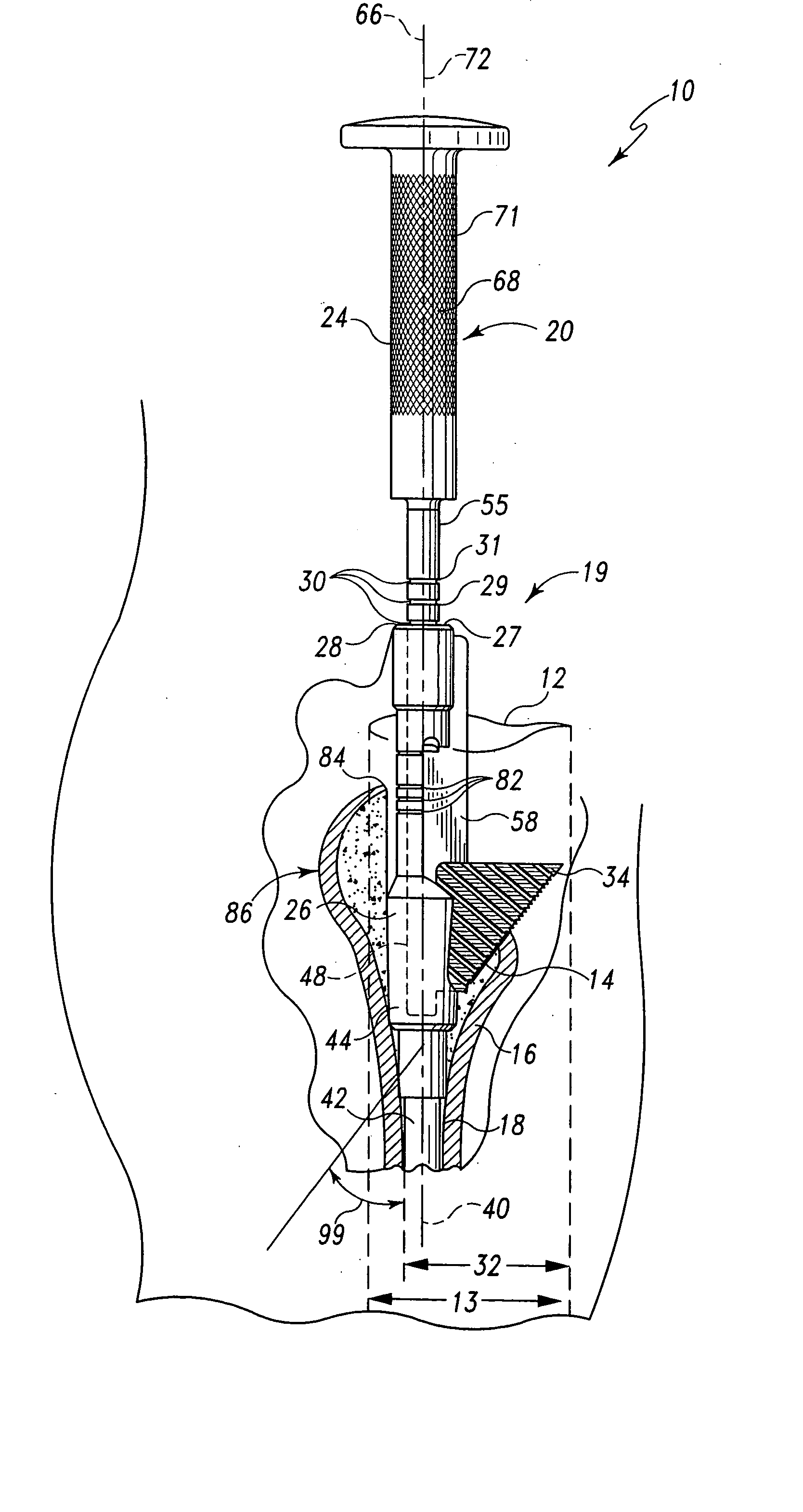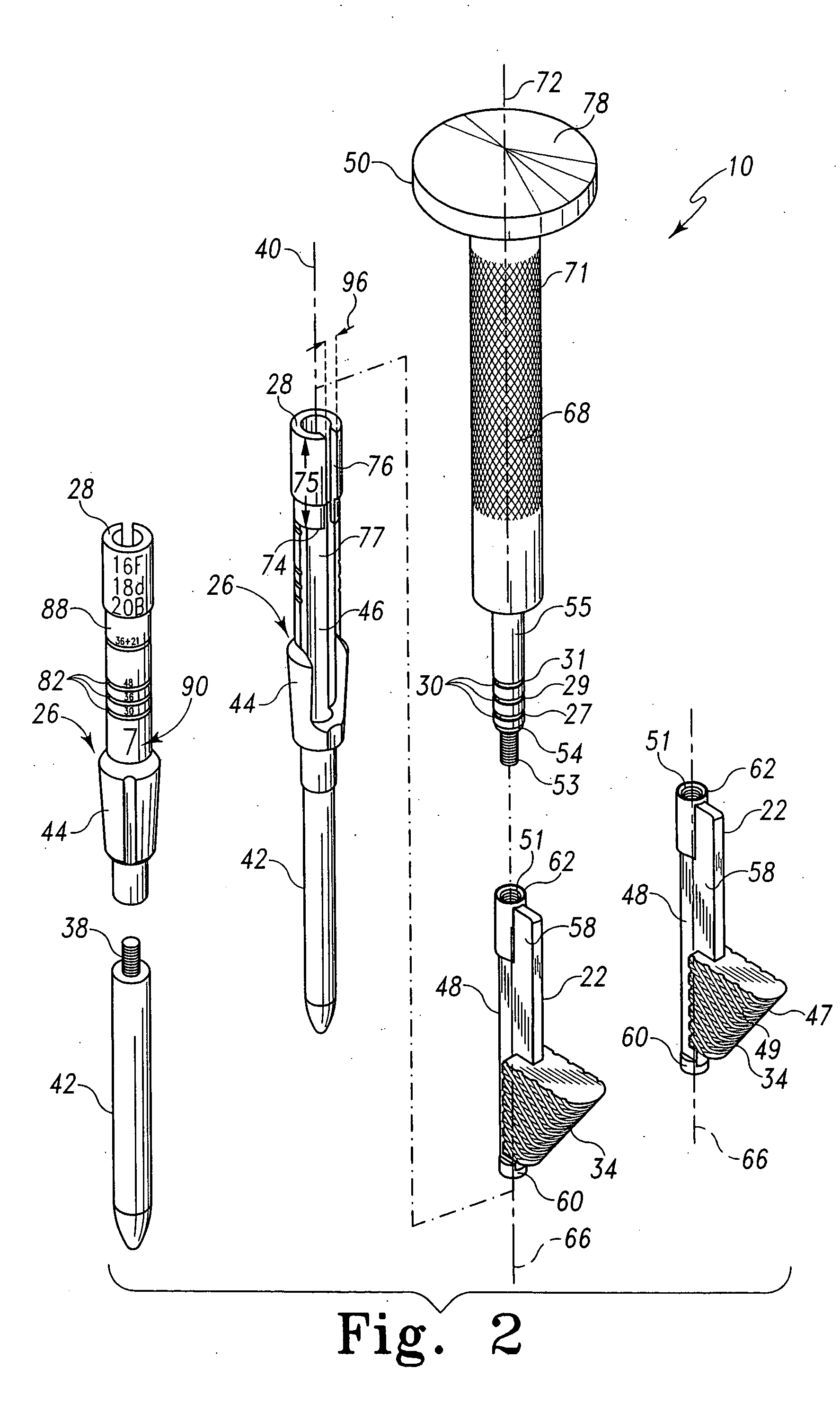Minimally invasive bone broach
a bone broach and minimal technology, applied in the field of minimally invasive bone broaches, can solve the problems of inability to create a precise triangular cavity, incisions that may be undesired, and limitations of available bone broaches or rasps used for bone preparation, and achieve the effect of reducing the size of incisions
- Summary
- Abstract
- Description
- Claims
- Application Information
AI Technical Summary
Benefits of technology
Problems solved by technology
Method used
Image
Examples
Embodiment Construction
[0030] For the purposes of promoting an understanding of the principles of the invention, reference will now be made to the embodiments illustrated in the drawings and described in the following written specification. It is understood that no limitation to the scope of the invention is thereby intended. It is further understood that the present invention includes any alterations and modifications to the illustrated embodiments and includes further applications of the principles of the invention as would normally occur to one skilled in the art to which this invention pertains.
[0031] The disclosed broaching system 10 allows a surgeon to prepare bone for receipt of an implant through a smaller incision 12 compared to existing surgical instruments. In the illustrated embodiment, the incision 12 has a width 13. Illustratively, the disclosed broaching system 10 can be utilized with an incision having a width 13 of less than two and a half inches. In one preferred embodiment, the width 1...
PUM
 Login to View More
Login to View More Abstract
Description
Claims
Application Information
 Login to View More
Login to View More - R&D
- Intellectual Property
- Life Sciences
- Materials
- Tech Scout
- Unparalleled Data Quality
- Higher Quality Content
- 60% Fewer Hallucinations
Browse by: Latest US Patents, China's latest patents, Technical Efficacy Thesaurus, Application Domain, Technology Topic, Popular Technical Reports.
© 2025 PatSnap. All rights reserved.Legal|Privacy policy|Modern Slavery Act Transparency Statement|Sitemap|About US| Contact US: help@patsnap.com



